kato-Special Features
In 1981, the TGV Sud-Est — painted in a striking futuristic orange and capable of an unprecedented 380 km/h — captured the world’s imagination with its groundbreaking speed and presence, signaling a new era in high-speed rail. In Japan, it caused a major sensation as the emergence of a formidable rival to the Shinkansen.
One person who felt the full impact of this moment was Yuji Kato, the founder of Sekisui Kinzoku (now KATO). Although expanding into the European market was already on his radar, the partner company at the time showed little interest in developing an N-gauge TGV model. Even so, Yuji Kato recognized the TGV Sud-Est’s historical significance and, above all, its sheer coolness. This conviction led him to push forward with development, and in 1983, the model of the TGV Sud-Est was completed.
The TGV Sud-Est was more than KATO’s first European model — it was a fully self-directed project that embodied the company’s vision and craftsmanship.

Hand-drawn Blueprints
Back then, there was no digital technology like CAD — every blueprint was created entirely by hand, based on reference materials from the actual train.
Each drawing reflected the passion and technical skill of the KATO team, driven by their desire to bring the world’s fastest train to life in model form.
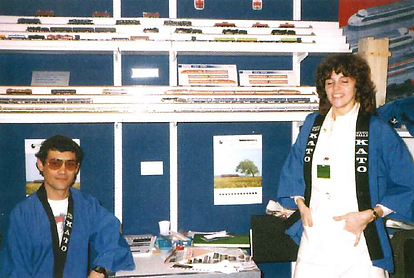
Success in the Japanese Market
While the TGV was developed with the European market in mind, it was also widely embraced in Japan.
The release of the original TGV model was prominently featured as a new product in KATO NEWS, the company’s monthly publication at the time — a testament to the excitement and enthusiasm it generated.

Entering the European Market
Although KATO moved forward with developing the TGV without a clear distribution network in place, the model ultimately gained recognition for its high level of craftsmanship — particularly through its exhibition at the Nuremberg International Toy Fair.
It became the model that sparked awareness of the KATO brand across Europe.


↑The N-gauge TGV racing boldly in the 1/160 scale world(KATO NEWS 1983 Oct-Issue No.11)
Featured Article in the
KATO NEWS 1983 October Issue (No.11)

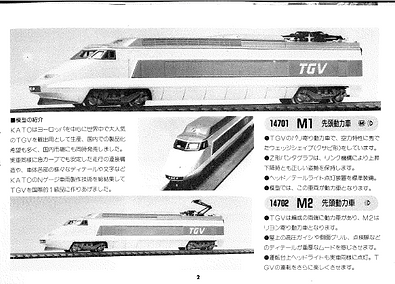


Since the release of the TGV Sud-Est in 1983, KATO has continued to produce models of international high-speed trains such as the TGV, Eurostar, and Thalys, evolving with the times. However, over the years and through repeated production runs, the moulds have naturally deteriorated. Production of the Sud-Est type TGV became impossible after the year 2000, making that year its final production run—now over 20 years in the past...
Reviving the TGV Sud-Est after 40 years
Nonetheless, customers from Japan, France, and across the globe have consistently expressed a strong desire for the “Orange TGV” to be brought back into production. This demand has only grown louder, especially with the accelerated retirement of the Sud-Est fleet due to the COVID-19 pandemic and the introduction of newer TGV models.
This stands as a testament to the “original TGV” as a legendary icon in railway history. Moreover, it has reminded us just how significant this model is within KATO’s own history.
Now, marking the 60th anniversary of KATO’s N-gauge, the TGV Sud-Est is reborn using the latest design technology.
Product Information

TGV Sud-Est 10-Car Set【Special Edition】(10-2134)
TGV Sud-Est 5-Car Basic Set (10-2083)
TGV Sud-Est 5-Car Add-On Set (10-2084)
*DCC compatible (6-pin sockets are fitted on M1 and M2 units. However, it is necessary to change the CV29 value of the decoder installed in M2 to reverse the headlight/taillight control).
Please note: Details regarding specifications of the DCC Sound version may differ.
Key Features
Lead Car
The front lights have been newly tooled, with a particular focus on the area around the headlights. Compared to previous models, the light area now has an even sharper, more refined appearance — a key detail to look out for.
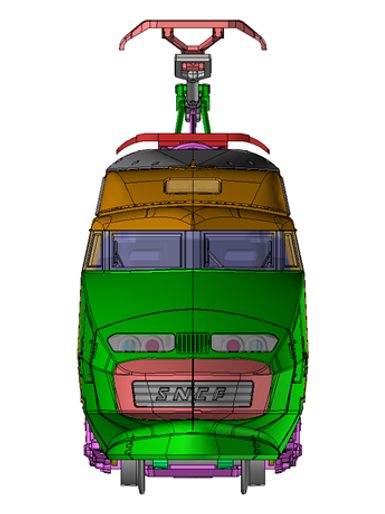
Prototype Image


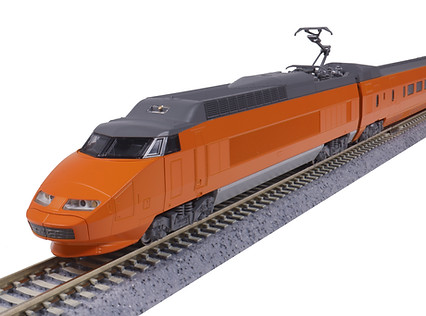
Prototype Image
Recreates the Sud-Est’s iconic silhouette, especially the unique contour from the front glass to the roofline.
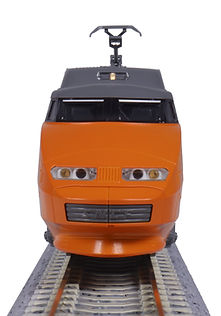
Prototype Image
Features a working headlight system with three warm-white LEDs, replicating the Sud-Est’s signature three-light configuration.

Prototype Image
The taillights are also lit, imitating the sharp, radiant glow of the original lights.

Prototype Image
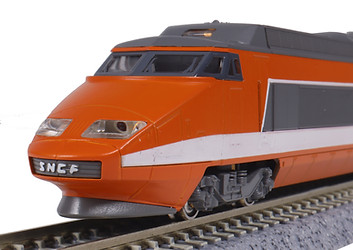
Image of Previous Model
Accurately captures the sharp, refined detailing around the headlight area.
The coupler cover features the “SNCF” logo, reflecting the design from the mid-1980s.
Pantograph
This model features a newly designed pantograph for AC use, featuring a complex and distinctive shape. It is aims to replicate the actual train’s appearance even more accurately than the previous version.
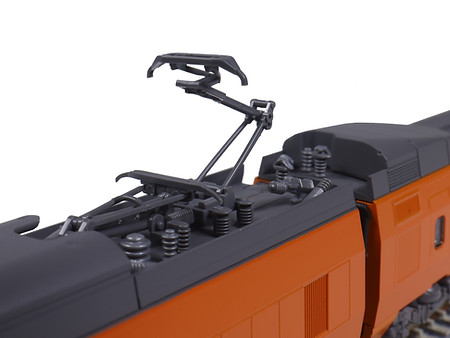
Prototype Image

Image of Previous Model
Bogies
The previous model reproduced the coil spring style used on the passenger car bogies when the train first appeared.
For this new product, the bogie between passenger cars has been newly designed to replicate the later version fitted with air springs, reflecting the upgrade made to improve ride comfort.
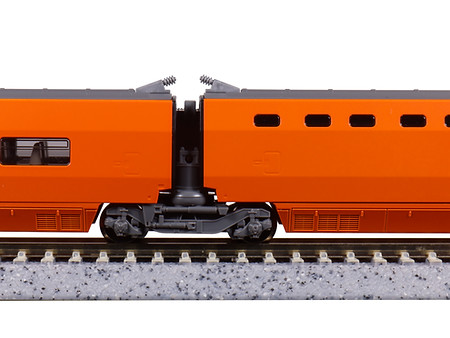
Prototype Image
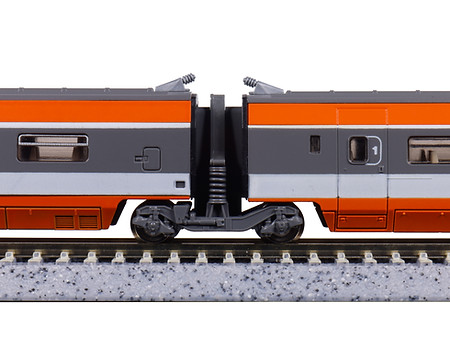
Image of Previous Model
20-Car Formation
While a 20-car formation wasn’t achievable with the initial release, the addition of a coupling mechanism now makes it possible. Using the included drawbar, you can recreate the impressive double-headed operation just like the real train.
Additionally, the included dummy circuit board replicates the headlight and taillight shutdown during coupling!
Unique Emblems for Each Trainset
The emblem designs assigned to each trainset have been accurately reproduced through print. The special edition features the “ROUEN” emblem. The 5-car sets which include trainset No. 84 feature the “DIEPPE” emblem.
Revival Design
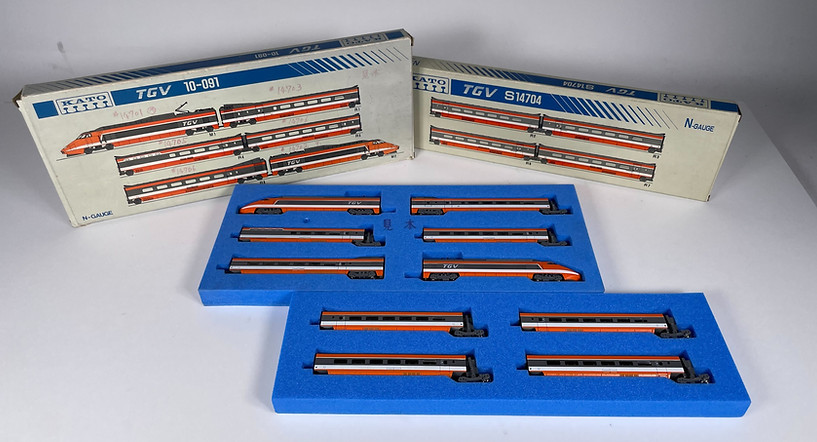
Image of Previous Model
When KATO first released the TGV Sud-Est model in 1983, it was composed of a basic 6-car set and an additional 4-car add-on set, packaged in a wide, cardboard box.
The upcoming release of the TGV Sud-Est 【Special Edition】will come in bookcase packaging and will feature a special slipcase design that pays homage to the original 1983 packaging.
Spring 2026
Experience the return of the iconic TGV Sud-Est, reborn through 60+ years of KATO expertise!
All rights reserved. 1998-2024 株式会社カトー / 株式会社関水金属
★ コンテンツ・写真等の無断転載を禁じます ★



